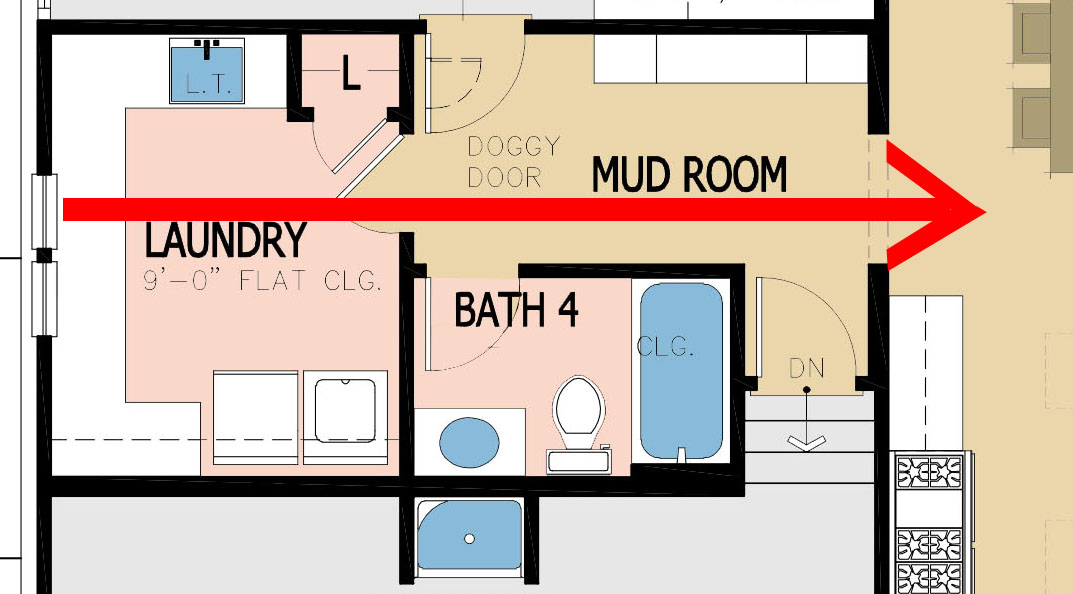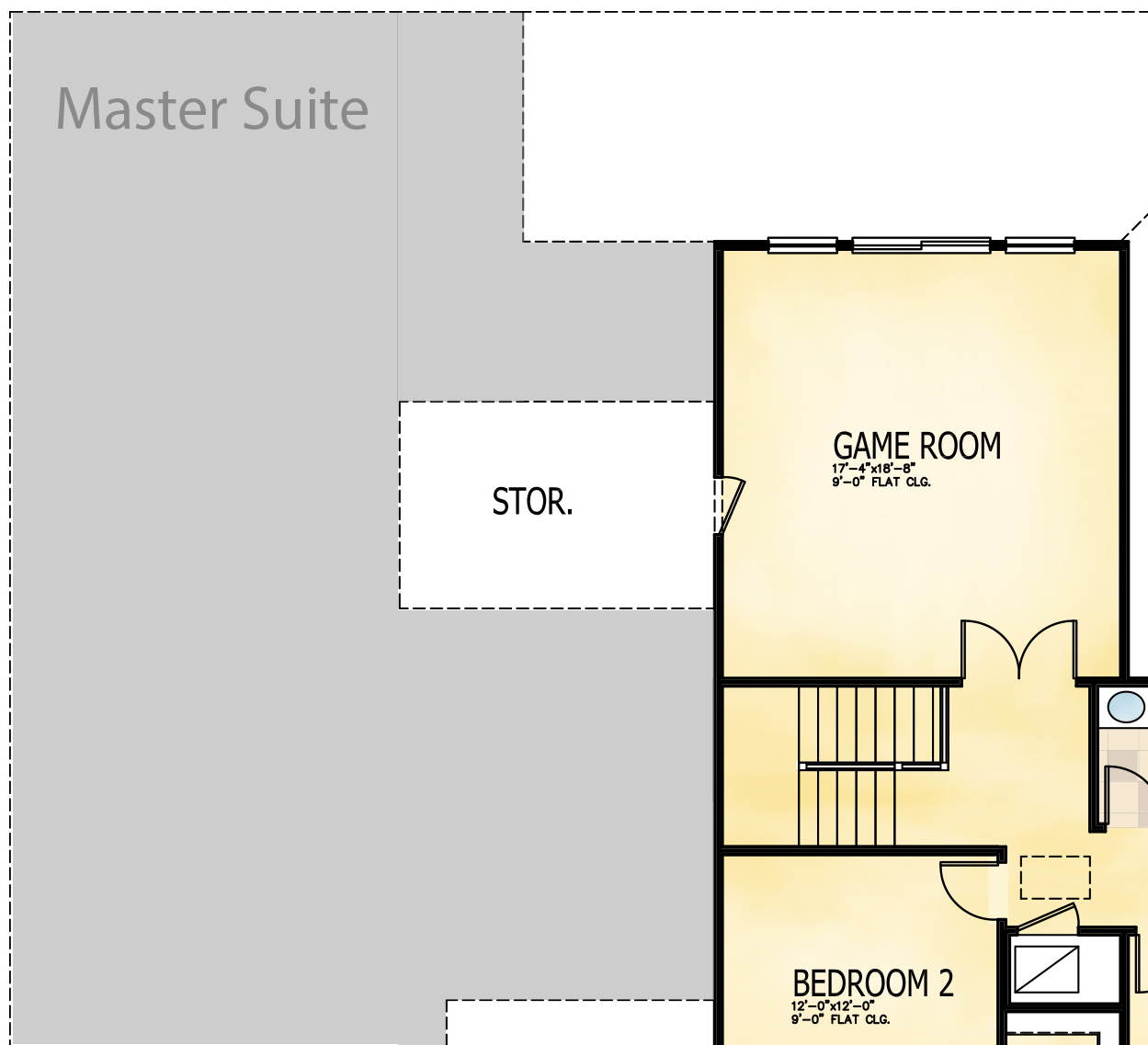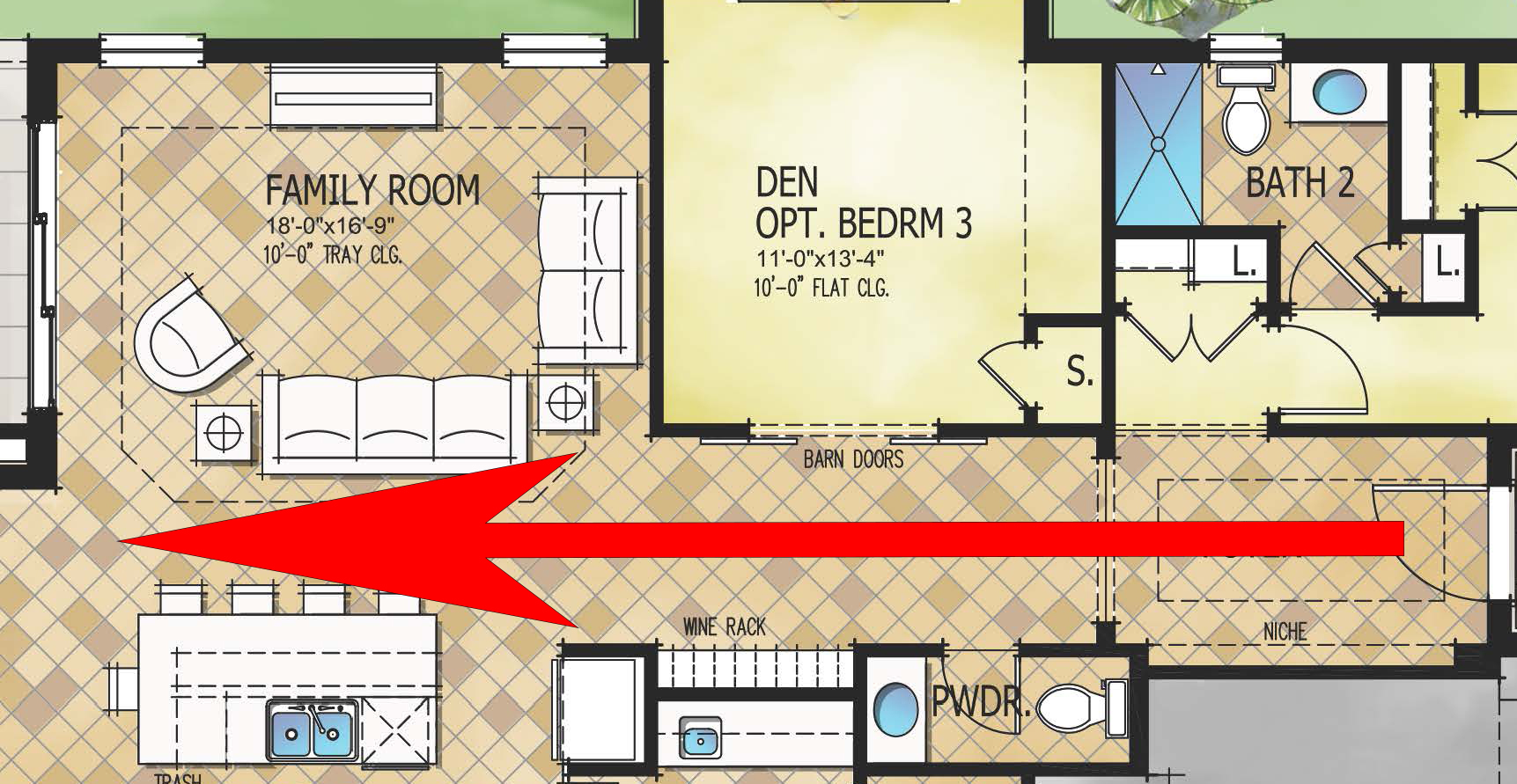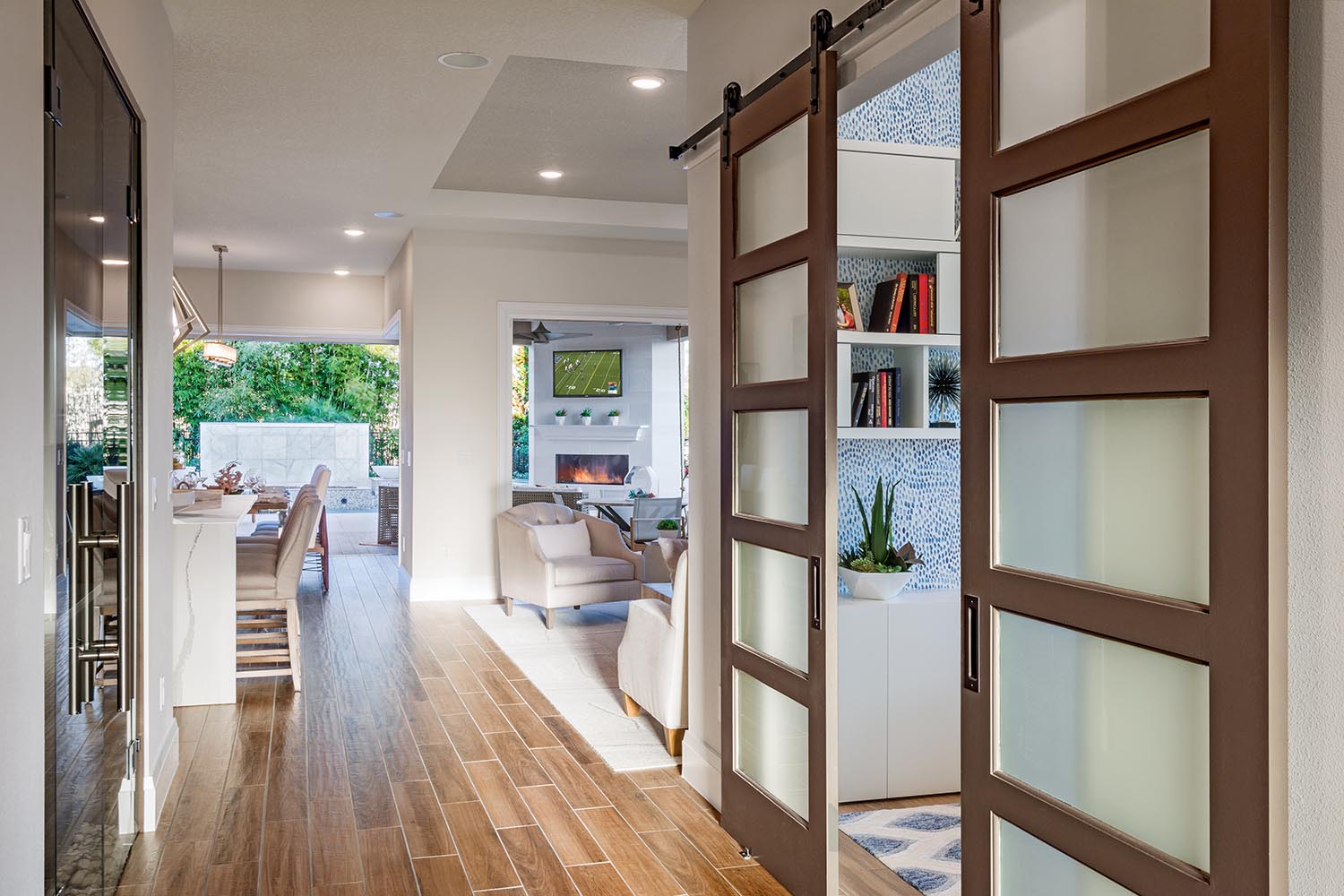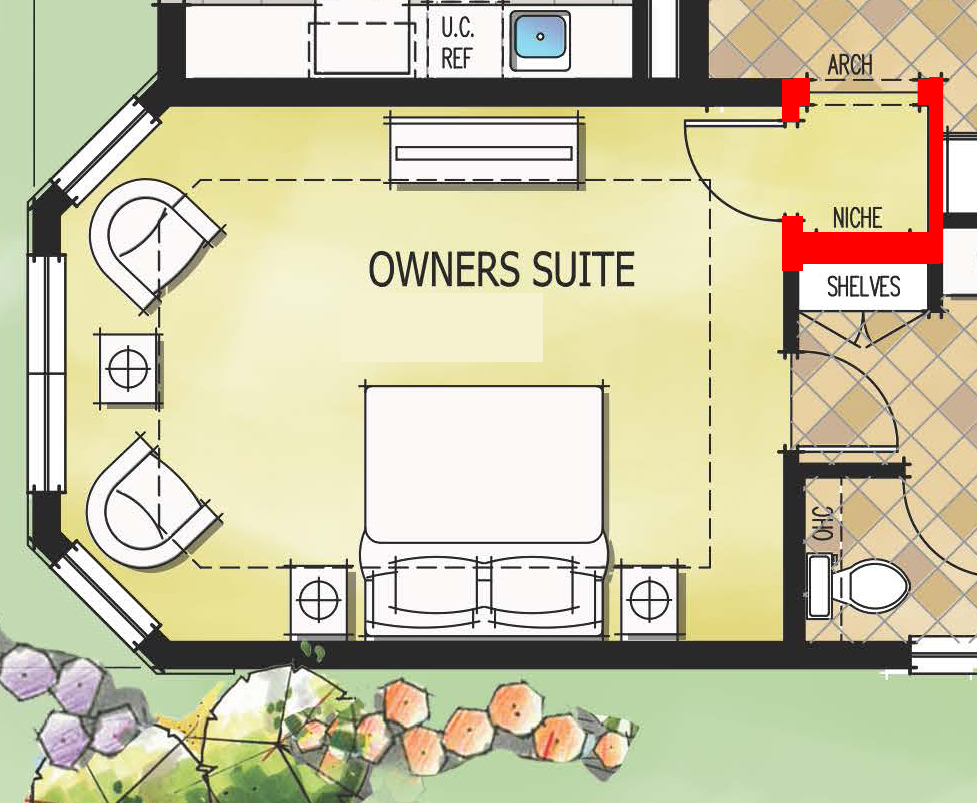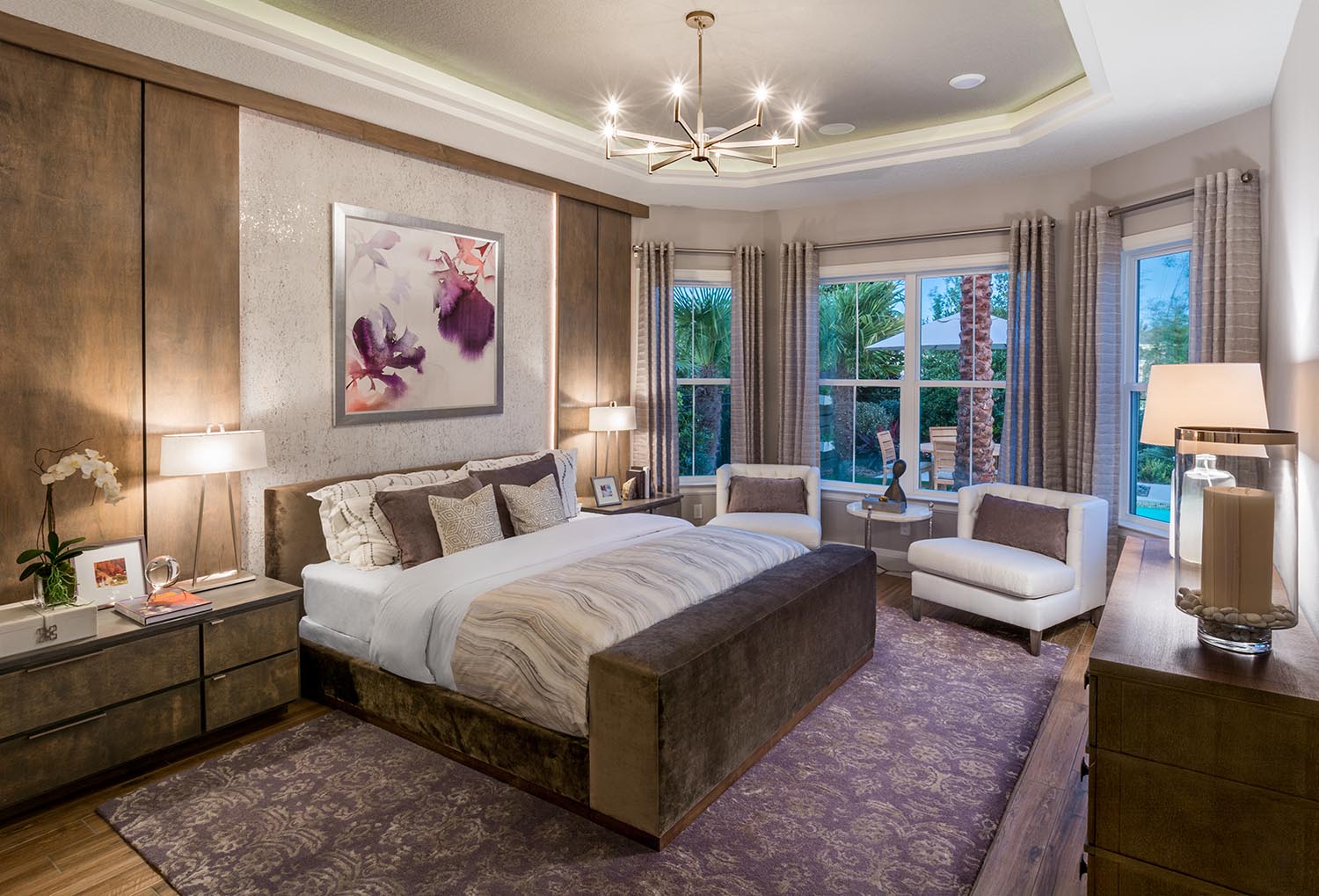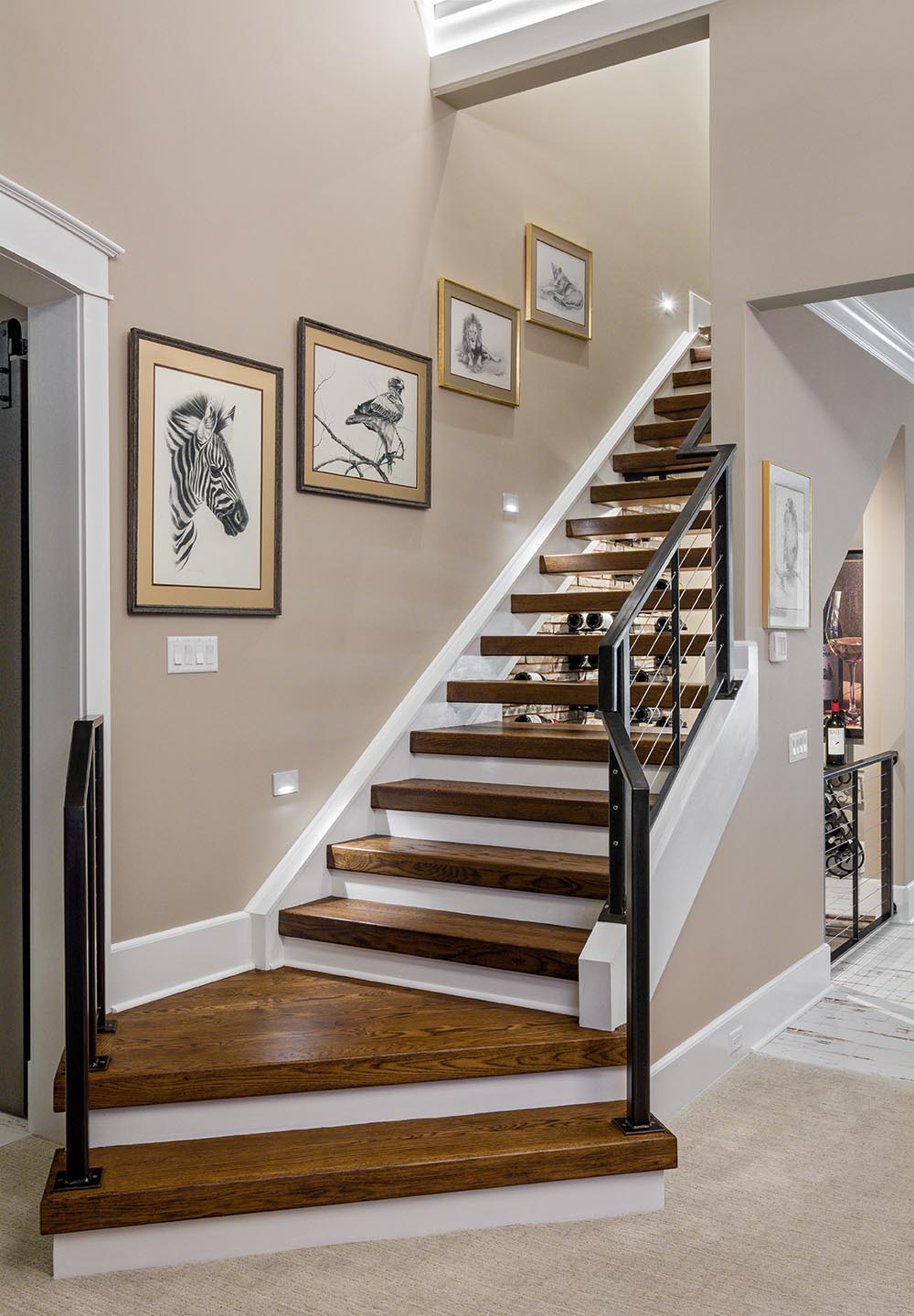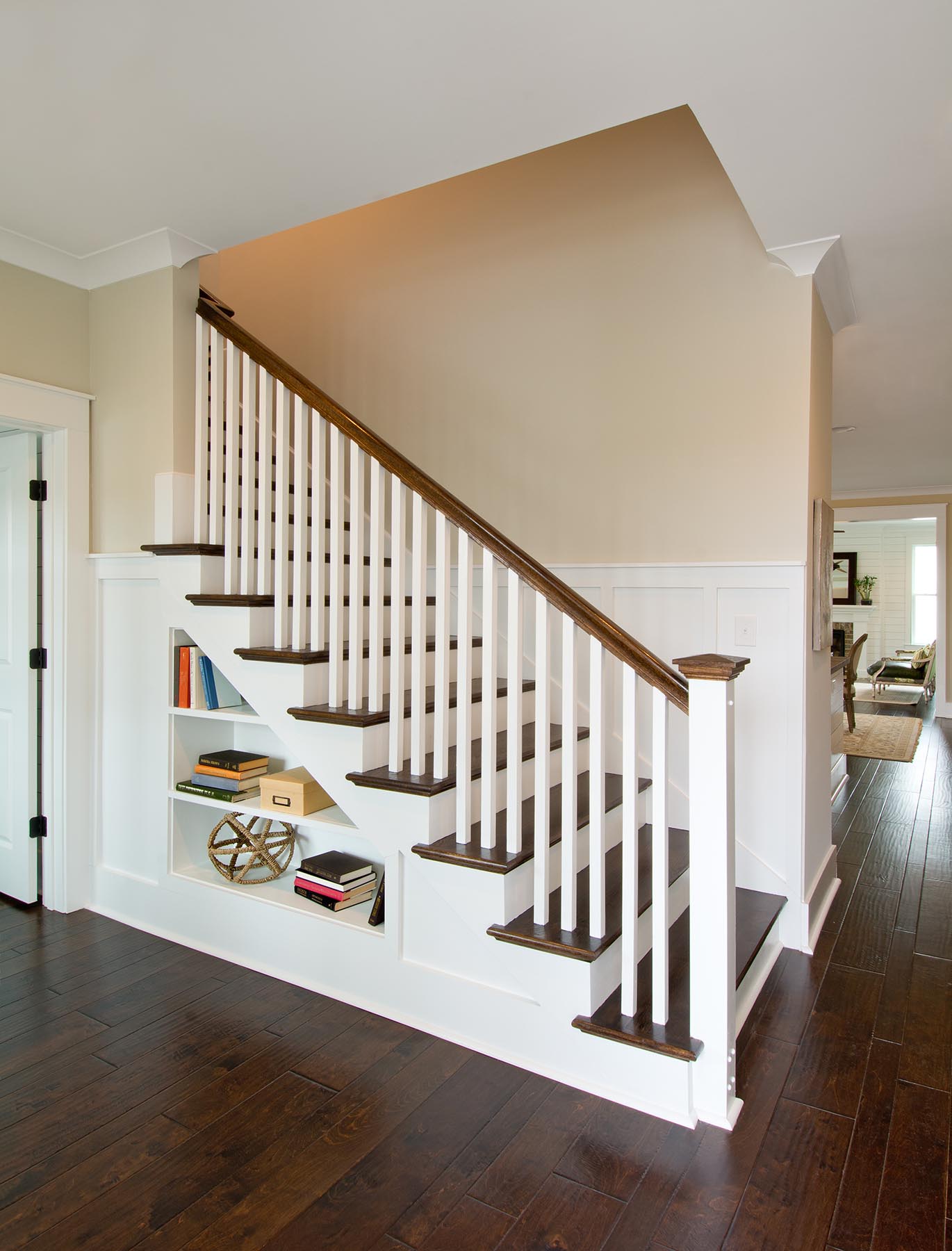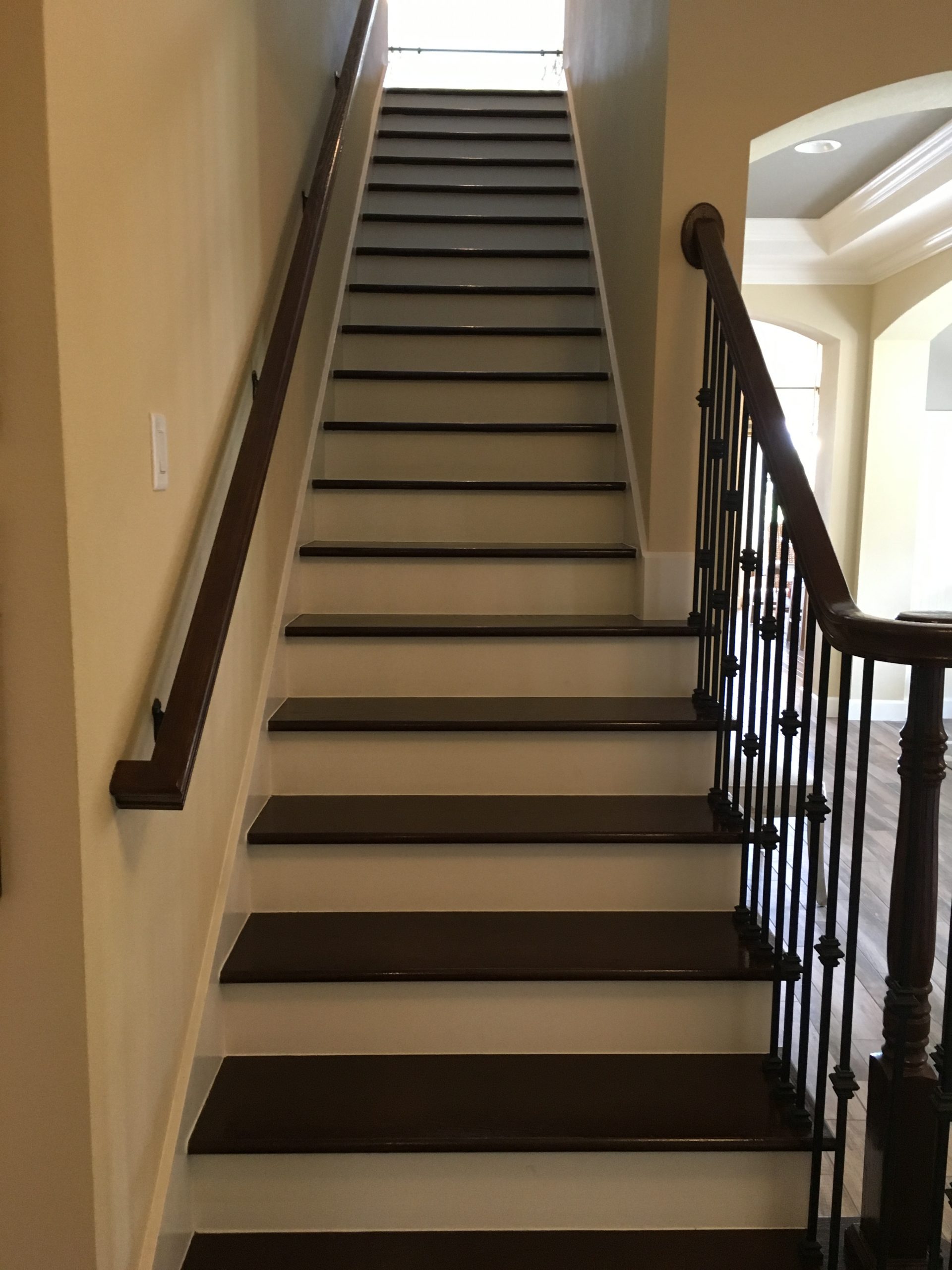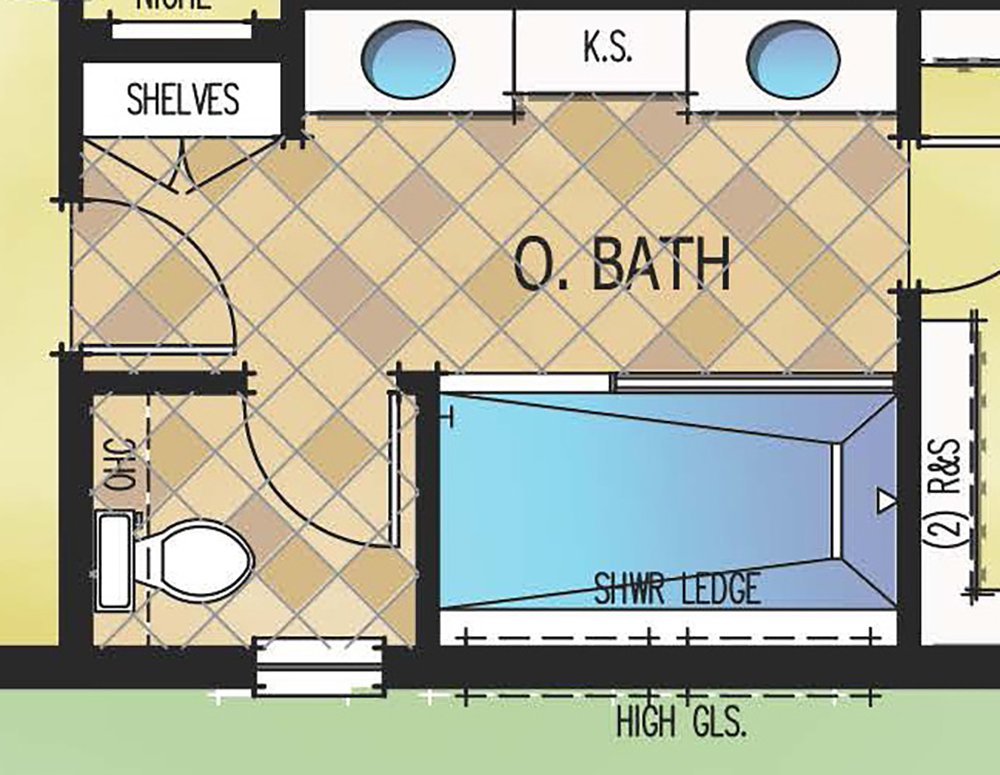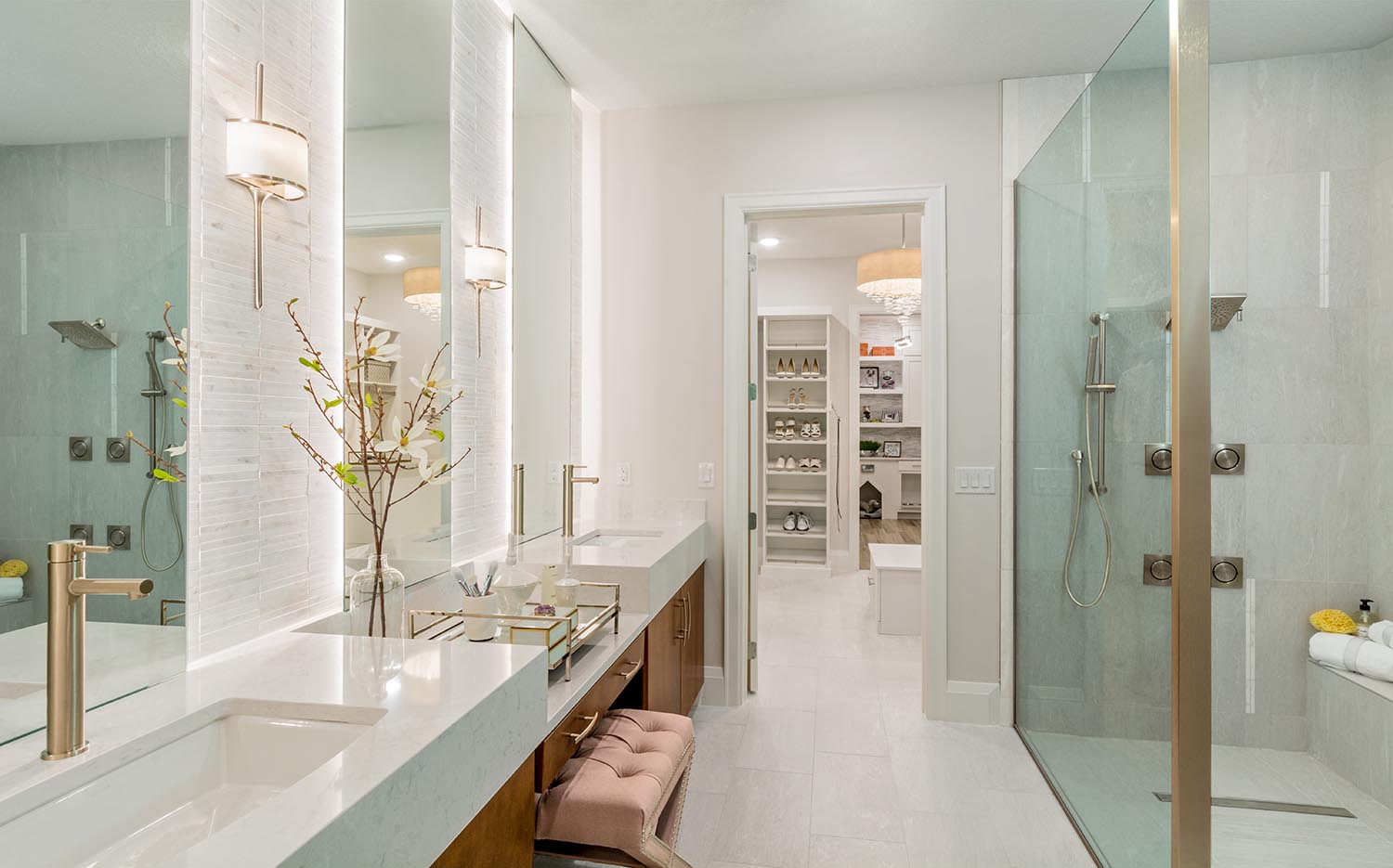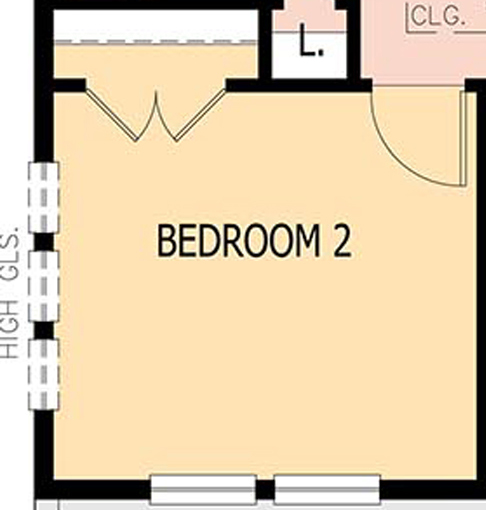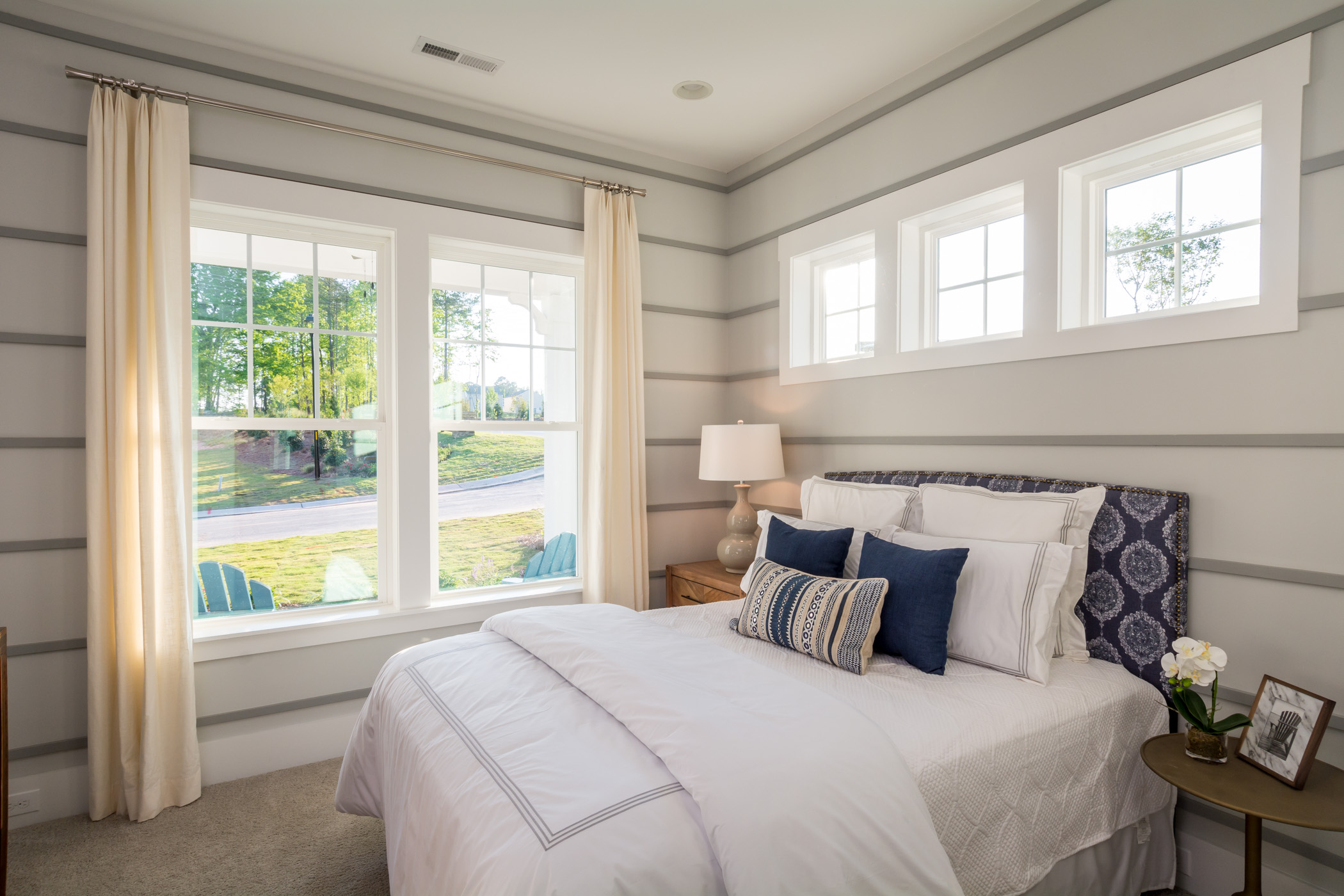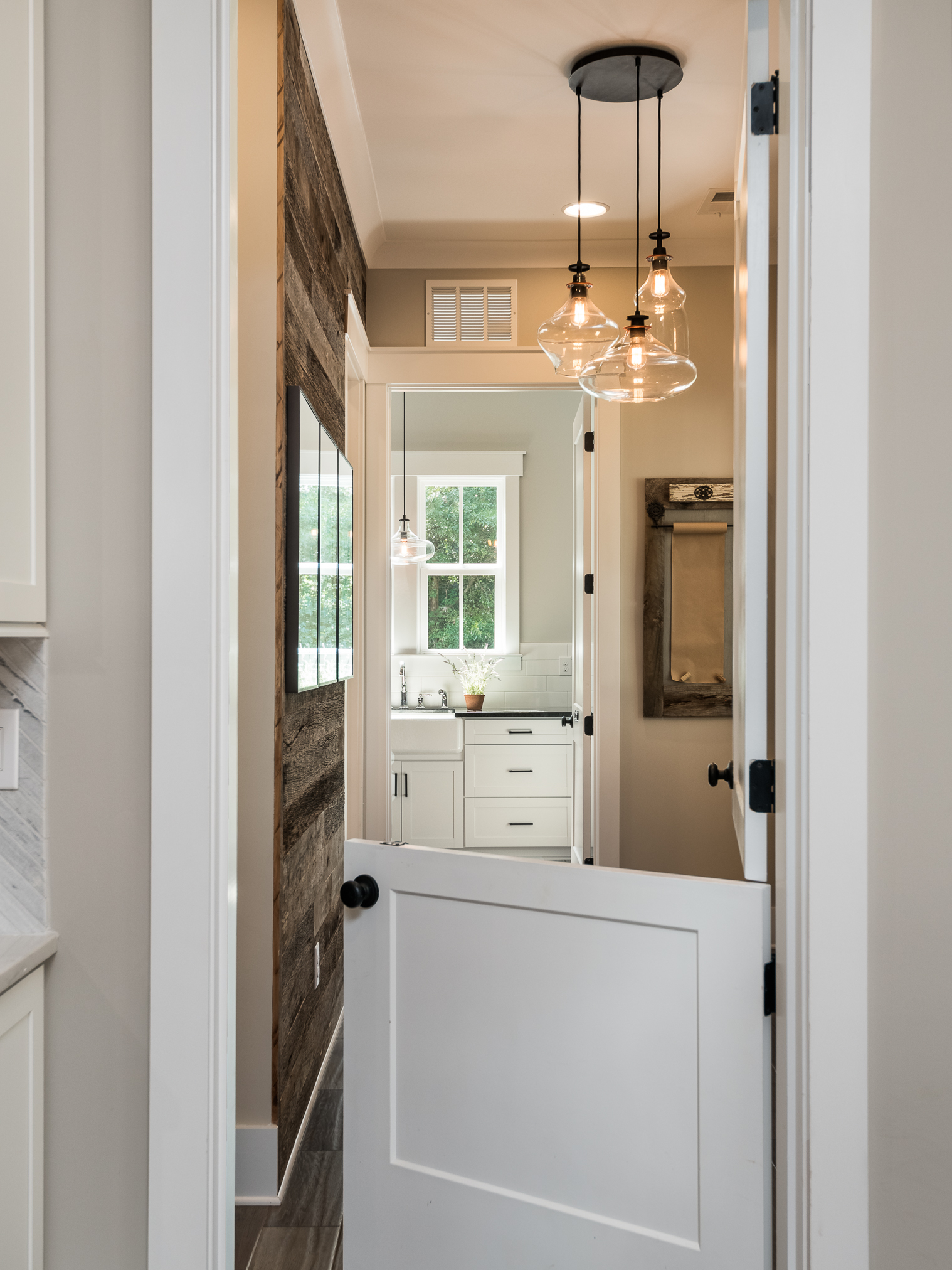Last week, we talked about understanding the floor plan basics – What all those crazy dashed lines mean, etc. Armed with the knowledge of reading floor plans, now comes the fun part – selling the plan. So let’s talk about the plan nuances that will not only make the plan come to life in the eyes of your buyers, but also differentiate your plans from the competition.
What are the plan nuances I am talking about? Simple, all the thing your buyers cannot hear or see just looking at the plan.
What Do You “Hear” When Viewing a Plan?
There are two kinds of acoustics in a house that I’d like to focus on. The first is isolating unwanted noises. The second is to discover which sounds are desired. Both are important on how the plan will live, but most buyers are completely unaware of these nuances.
Zoned floor plan
I talk often about “zoned” floor plans. What I mean is the owner’s suite is acoustically separated from the secondary bedrooms. Thanks to baby monitors, parents can listen into their baby’s bedroom without their babies being physical located in the adjacent room with the door open. In this case, the wanted sounds are delivered via the baby monitor and the unwanted sounds are buffered by distance or bathroom and closets.
Nothing above the master
One of Housing Design Matters’ standards when design a master down floor plan is to avoid putting rooms above the master bedroom. No one wants to pitter-patter of feet above them when there are trying to sleep. Or worse, the exercise room above the master. “Oops, sorry honey. I didn’t mean to wake you when I dropped that weight.” Chances are that you buyers haven’t even thought about this. Pointing this out to them will make them appreciate your thoughtful design and heighten their awareness to this issue as they review other builders’ plans.
plumbing sounds
One advantage of selling from a floor plan verses walking the model is a better understanding of the where the plumbing in the walls are. It is surprising how much noise can be transmitted through a wall by running water. Imagine watching a romantic movie, the scene is quiet, the actors are whispering and then you hear the toilet flush on the other side of the wall. And if you are a mom, you are now listening hear if your little ones are going to wash their hands. So much for romantic! It is always best to back up plumbing walls to closet walls or non-bedroom walls. This includes the wall with the washer.
What Do We Want to Hear?
It is important to talk about what you do want to hear – like the television when you’re working in the kitchen. Or better yet, the soothing sounds from the water feature in the backyard. If you’re unlucky enough to have to sell a plan with adjacent road noise, be sure mention that water features are great tools for drowning out road noise.
What do you “see” when viewing a floor plan?
Sight lines
It is critical to talk about sight lines when selling from floor plans. What is the view from the front door? I hope it isn’t the toilet in the bath adjacent to the foyer. Instead, we want to create a sight line through the house, out the window to the backyard – making the house looks its biggest!
Is the entry from the garage to the house just as impactful or is it more of an afterthought? What is the view from the kitchen sink? Is it to the neighbor’s AC unit in their side yard or to the TV, fireplace, and the action in the nearby family room? You can probably assume where I stand on that issue.
There are things that we don’t want to see – like the before mentioned toilet from the foyer. Adding a vestibule entry into the master bedroom adds that extra layer of privacy to your sanctuary – or keeps others from noticing that the bed isn’t made.
Stairs are a critical design element. They are visually interesting. They are best viewed from the side when they are open to the adjacent room with a half wall or railing. The adjacent room feels bigger because of the stairs’ placement. This is true on both the top and bottom floor.
The most unwanted view of the stairs is straight on, especially when it is a stair without a landing. Closing a stair in with walls not only robs the adjacent room the benefit of the expanded space but also feels claustrophobic when using them. Savvy builders will put the door to the unfinished basement at the bottom of the stairs to make the upstairs feel as big as possible.
The Role of light
Our eyes are drawn to light – this includes natural light. Good architects use this to their advantage with strategically placed windows where they will have the most impact. Placing natural light at the end of the sight line from the front door will draw the eye all the way through the house, maximizing the perceived size of the home. We also know this phenomenon works in the master bath, creating the maximum “Pow” when you walk into light from the window or the mirrors above the vanity. Are you painting this picture to your buyers?
The Magic of natural light
Natural light is so important to how a home “feels”. Rooms that are light, bright and airy also feel bigger. Windows expand the space in two ways. First, because they let in natural light. But also, because they allow the eye to view beyond the walls of the house itself. This is why pairing windows together have more impact than single windows split at opposites sides of the room. Likewise, flanking windows in the corner of the room will make the room feel even bigger. How you portray these spaces will make all the difference in how a home buyer perceives them as a viable option.
Borrowed light
One of my favorite design tools is to locate windows across from the door where there’s an opportunity for that light to spill into an adjacent hallway. Be sure to point this feature out to buyers or they will miss it completely.
What are the nuances of your floor plans – those important details that may not be immediately apparent when visiting your model in plan only? Take some time to study them and get comfortable showcasing these features to potential buyers so they too can fully appreciate the benefits of your houses. Remember, you are the difference maker when it comes to your buyers’ understanding of a plan.
If you know someone who wants to improve at selling plans remotely, please forward them this blog. Better yet, invite them to visit our website and sign up for our weekly newsletter.
Categorized in: Housing in the Pandemic, Selling Floor Plans
This post was written by Housing Design Matters


